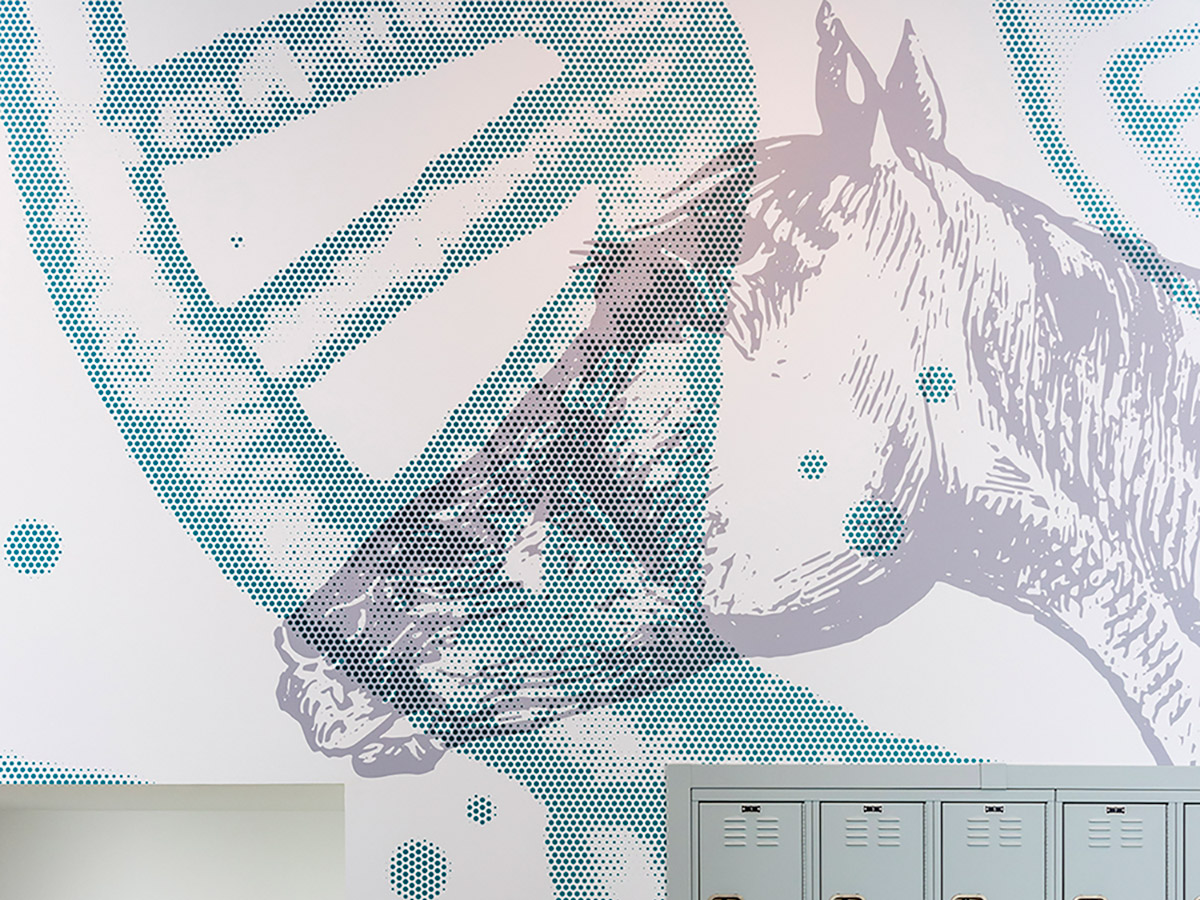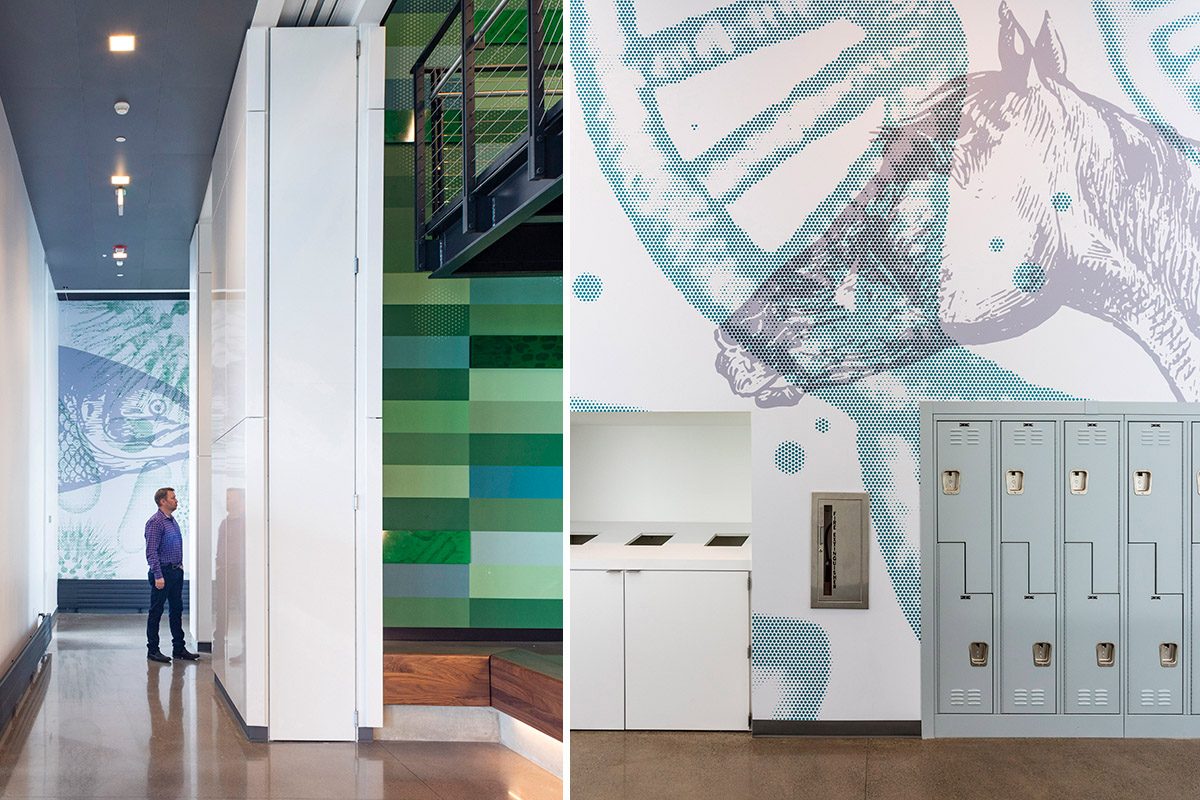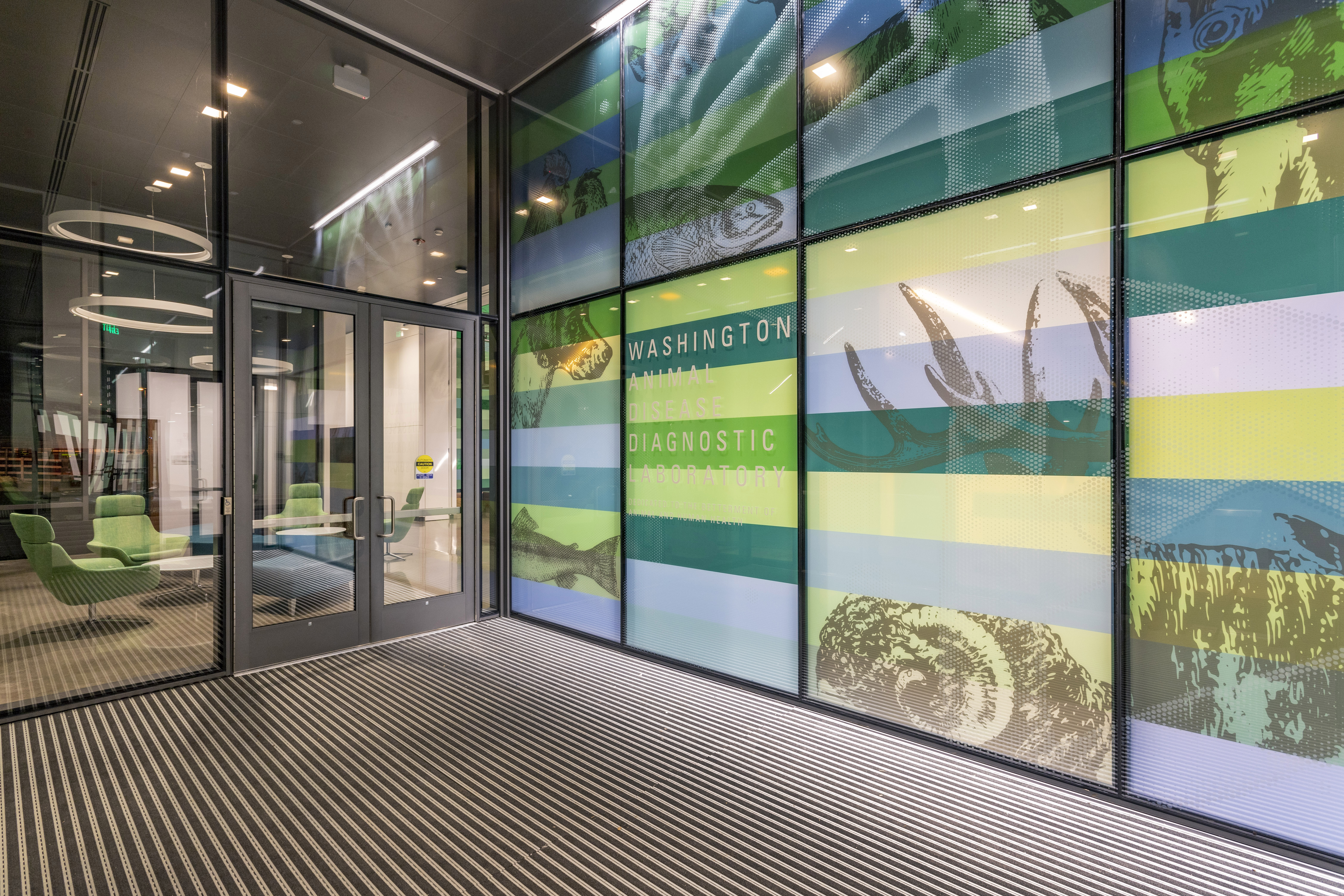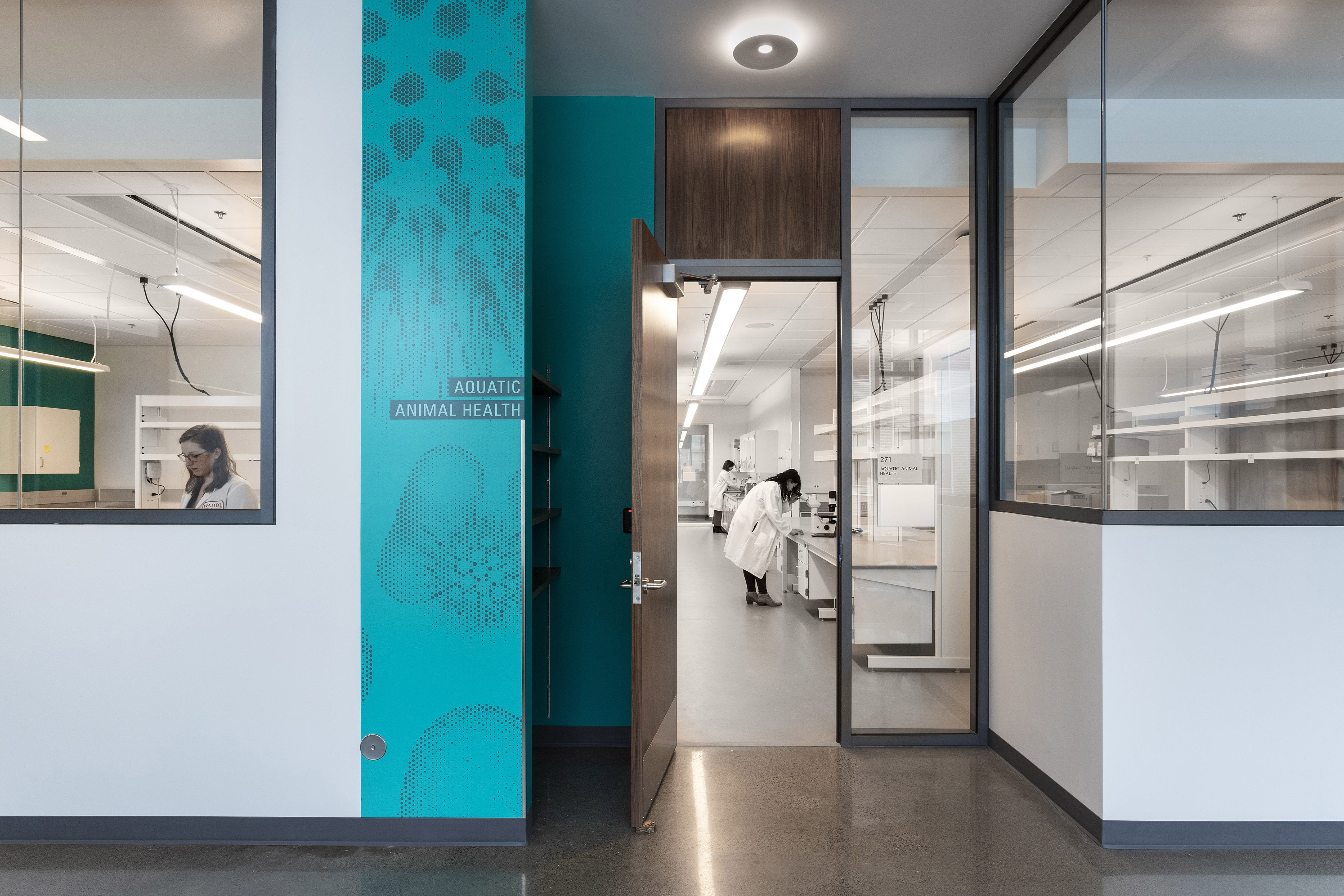Blog
Washington Animal Disease Diagnostic Laboratory
Navigating the Future of Animal and Human Health

Large-scale, full-color graphics introduce you to WADDL’s mission of seeking to understand animal health through scientific inquiry and techniques.
From its Washington State University (WSU) location, the Washington Animal Disease Diagnostic Laboratory (WADDL) is a cutting-edge research facility that has a global impact on the understanding and evolving knowledge of both animal and human health.
We were tasked with designing and executing an environmental graphics and wayfinding system for the building to educate people about the lab’s important work — the pursuit of knowledge — its shared purpose with WSU of education and study, and help staff and visitors navigate the building. The scientific research done within the walls of WADDL saves the lives of animals and humans through the detection of disease. We set out to share and celebrate this vital mission by making the space vibrant, welcoming, and educational.
Our exploration started with the idea of honoring two key elements of WADDL: what is happening within the facility (the development of new knowledge about animal health) and where it’s located (WSU, as an educational institution, and the Palouse).


Bands of vibrant colors that represent the building blocks of DNA pair with scientific illustration and animal imagery to convey the journey from science and discovery to learning and education.
With a desire to both educate people about and capture the research and knowledge transfer that takes place within WADDL, we developed a layered graphics program featuring illustrative animal and scientific imagery as well as a colorful rectangular grid pattern that evokes the banding and block structure of DNA (and nods to the unique rolling hills of the Palouse with its vibrant colors). The combination speaks to how the WADDL scientists and researchers seek to understand animals and to share that knowledge.
DNA sequencing is a key technique that WADDL uses to help diagnose and detect disease in animals, which we further wove into the visual language through a double helix pattern. In the main circulation areas, such as the entry and main level corridor, we used this visual approach — illustrative paired with scientific — at a large scale and cropped intentionally to focus certain elements of animals such as a horn, nose, or fin, to represent the scientific journey toward understanding.
 Each laboratory within WADDL has an inspiring yet informative graphic that represents the work of its scientists and researchers.
Each laboratory within WADDL has an inspiring yet informative graphic that represents the work of its scientists and researchers.
Through our design program, we also needed to identify each laboratory space and the scientific work conducted inside. Working with the project’s architect, Perkins&Will (Seattle), we assigned each floor a color — green, teal, and blue — and graphic treatment for the doorway of each lab.
The large-scale and vibrant environmental graphics system throughout WADDL conveys the crucial — to both animals and humans — work conducted day in and day out within this state-of-the-art facility. It provides education and inspiration for anyone who steps foot into the building, whether faculty, office staff, laboratory staff, students, and visitors who come by.
Photos by Rick Keating Photography
Published on 12 July 2021